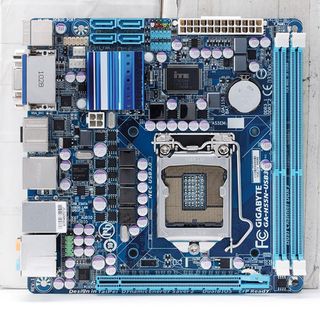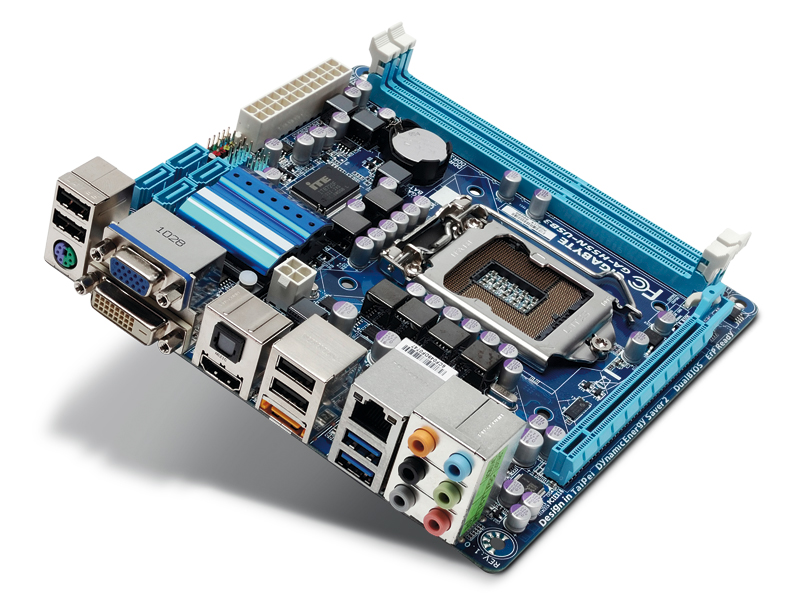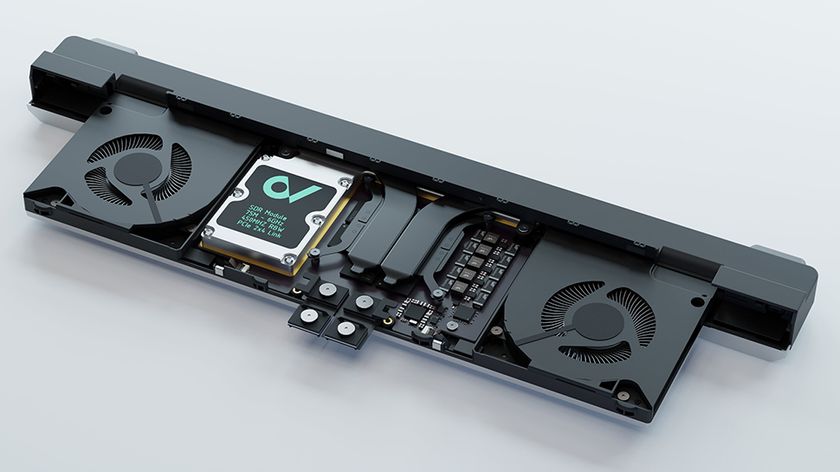TechRadar Verdict
Huge performance from a hilariously small board. It even has USB 3.0. Remarkable.
Pros
- +
Superb stock and overclocked performance
- +
USB 3.0 support
- +
Competitively priced
Cons
- -
Limited expansion and cooling options
Why you can trust TechRadar
Slide the latest PC processors under a microscope and you'll discover transistors measuring just 32nm across. So ludicrously tiny, in other words, that 500nm would fit inside the width of a human hair.
Thus, enquiring minds might wonder why anyone needs a hulking great PC system based on the ATX motherboard form factor. Instead, why not go for a much smaller system based on a Mini-ITX board, such as the Gigabyte H55N-USB3?
Measuring 17cm on both sides, it's much, much smaller than a standard 30cm by 24cm ATX motherboard. But it's powered by the same Intel H55 chipset used by much larger motherboards, such as MSI's H55-GD65.
Indeed, the Gigabyte H55N-USB3 not only has an Intel LGA1156 CPU socket, supporting high performance processors including the Core i7 800 series, it can also handle high performance discrete graphics thanks to a full 16-lane PCI Express graphics port.
Factor in a pair of USB 3.0 ports and the result certainly looks like a high performance package married to puny proportions. The Gigabyte H55N-USB3 is so small, it's hard to take it seriously.
Admittedly, the Lilliputian measurements do come with a few downsides. There's very little space around the CPU socket. High performance air cooling is therefore not on the menu.
Likewise, you only get a pair of DDR3 slots which makes for fewer options in terms of memory configurations and could push up the cost of future upgrades. With just a single PCI Express graphics slot, expansion options are also limited.

What Gigabyte hasn't compromised on, however, is performance. This fun-sized motherboard really flies.
Running a powerful quad-core Intel Core i7 870 processor at standard clockspeeds, the H55N-USB3 is virtually indistinguishable from a full ATX board based on the H55 chipset. It absolutely tears through the video encoding or image rendering benchmarks we ran it through.
Ride the intel
Even more impressive is its overclocking prowess. A maximum baseclock of 210MHz may not be quite as fast as the best desktop boards based on the H55 chipset, but it's enough to get the maximum out of most Intel LGA1156 chips.
Likewise, with a discrete graphics card in the PCI Express slot, you get full desktop performance in games.
Of course, Intel sells a wide range of processors for the LGA1156 socket. If you fancy something that is a little more power efficient, try plopping in a Core i3 500 or Core i5 600 series.
Using the integrated Intel HD graphics that comes with those particular chips, overall platform power consumption at maximum load comes in under 100 Watts. That's well under half of what you would expect from a full ATX H55 system with discrete graphics.

Technology and cars. Increasingly the twain shall meet. Which is handy, because Jeremy (Twitter) is addicted to both. Long-time tech journalist, former editor of iCar magazine and incumbent car guru for T3 magazine, Jeremy reckons in-car technology is about to go thermonuclear. No, not exploding cars. That would be silly. And dangerous. But rather an explosive period of unprecedented innovation. Enjoy the ride.
Most Popular






